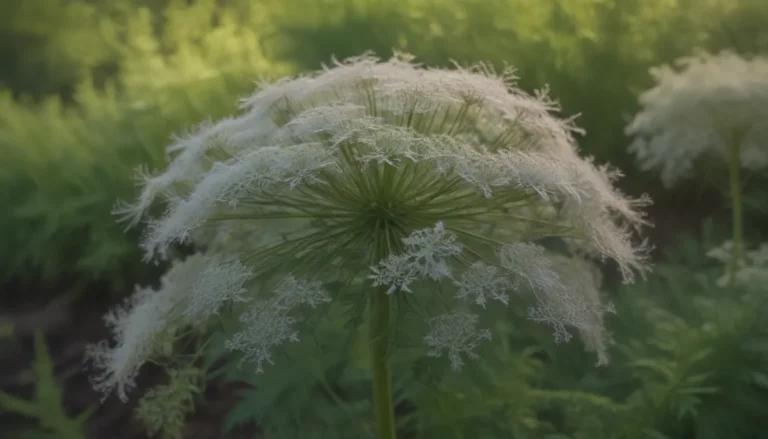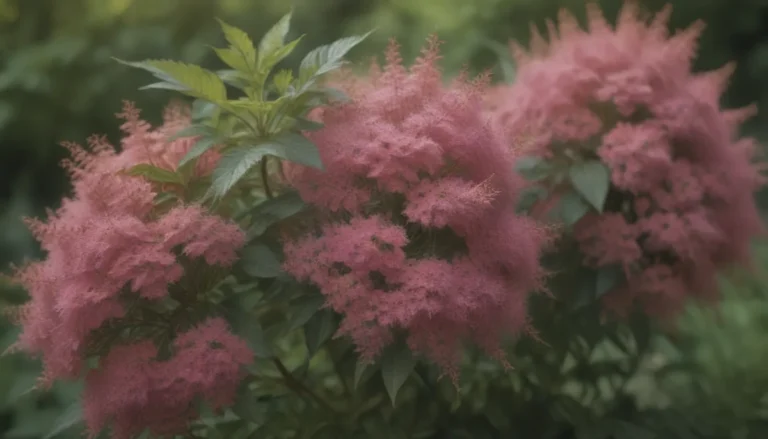Everything You Need to Know About Growing and Caring for Miscanthus (Silvergrass)

Are you considering adding some beautiful silvergrass to your garden landscape? Miscanthus, also known as silvergrass, is a perennial, woody grass that can bring a touch of elegance and movement to any outdoor space. In this comprehensive guide, we will walk you through everything you need to know about growing and caring for miscanthus. From planting to pruning, we’ve got you covered!
Why Choose Miscanthus?
Before we dive into the details of growing and caring for miscanthus, let’s talk about why this grass is such a popular choice among gardeners. Here are a few key reasons why you might want to consider adding miscanthus to your landscape:
- Hardy and long-lived: Miscanthus is a hardy plant that can withstand various temperatures and conditions, making it a low-maintenance option for your garden.
- Beautiful aesthetics: The arching grass mounds and feathery flowers of miscanthus add a touch of grace and structure to any garden landscape.
- Drought-resistant: Miscanthus is a drought-tolerant plant, making it a great choice for areas with limited water supply.
- Versatile: With around 20 different species to choose from, miscanthus offers a variety of options to suit different preferences and garden styles.
Miscanthus Care Requirements
Here are some essential care requirements to keep in mind when growing miscanthus in your garden:
Light
If you want to enjoy the full beauty of miscanthus, make sure to plant it in a full sun position. While miscanthus can tolerate light shade, you’ll see the most impressive flowering display in a sunny spot. Just be mindful of too much direct sunlight, as it can scorch the leaves.
Soil
Miscanthus can grow in various soil conditions and pH levels, but it thrives in well-drained, rich soil. Whether you have loamy or heavy soil, miscanthus can cope surprisingly well with different soil types.
Water
Miscanthus is a drought-tolerant plant, so you won’t need to water it frequently. However, be cautious of overly wet soils, as they can cause the plant to die over the winter. Deep watering occasionally during dry spells is sufficient to keep your miscanthus healthy.
Temperature and Humidity
Miscanthus can withstand various temperatures, but it produces the most impressive flowering display during hot summers. Make sure to protect the plant from excessively cold soil temperatures, especially when establishing new growth.
Fertilizer
One of the advantages of growing miscanthus is that it rarely needs additional feeding, especially when mature. A layer of compost in the spring should provide enough nutrients for the plant.\
Types of Miscanthus
With around 20 different species to choose from, miscanthus offers a variety of options for your garden. The most popular ornamental species is Chinese silvergrass (Miscanthus sinensis). Here are a few popular miscanthus types to consider:
- Zebra grass (Miscanthus sinensis ‘Zebrinus’)
- Porcupine grass (Miscanthus sinensis ‘Strictus’)
- Maiden grass (Miscanthus sinensis ‘Gracillimus’)
- Variegated Japanese silver grass (Miscanthus sinensis ‘Variegatus’)
- Miscanthus x giganteus
Make your selection based on your preferences and garden style, keeping in mind the height and spread of each type.
Pruning Tips
To keep your miscanthus healthy and looking its best, follow these pruning tips:
- Prune in late winter or early spring: Trim back any dead leaves to promote healthy new growth.
- Remove seedheads: To prevent invasive plant growth, remove the seedheads in early fall.
- Divide rhizomes: Divide the rhizomes during the dormant period to propagate new plants.
Following these pruning tips will help maintain the health and appearance of your miscanthus plants.
How to Get Miscanthus to Bloom
If you want to encourage more blooms in your miscanthus plants, follow these tips:
- Plant in full sun: Miscanthus blooms best in full sun.
- Maintain moist, well-drained soil: Make sure the soil is well-drained and moist to promote blooming.
- Deadhead flower heads: Removing faded blooms helps prevent self-sowing and encourages more flowers.
By following these tips, you can enjoy a beautiful display of feathery blooms in your garden.
Common Problems and Solutions
While miscanthus is a hardy and low-maintenance plant, certain issues can arise depending on growing conditions and care. Here are some common problems you may encounter:
- Disappointing flowering: Cool summers with little sun can result in fewer flowers. Plant your miscanthus in a sunny spot to ensure abundant blooms.
- Brown patches on leaves: Excessive direct sun can cause scorch or rust on the leaves. Remove any affected leaves and consider planting variegated varieties in partial shade.
- Leaf rolling: Lack of water can cause the foliage to roll in on itself. Water deeply during dry spells to prevent this issue.
By addressing these common problems promptly, you can keep your miscanthus plants healthy and thriving in your garden.
Conclusion
In conclusion, miscanthus is a beautiful and versatile plant that can add elegance and movement to your garden landscape. By following the care requirements, selecting the right species, and addressing any issues that may arise, you can enjoy the beauty of miscanthus in your outdoor space for years to come. Whether you’re a seasoned gardener or a beginner, miscanthus is a great choice for a low-maintenance and aesthetically pleasing addition to your garden landscape. So, why not give miscanthus a try in your garden and enjoy its beauty year after year?
Remember, be cautious when choosing an ornamental grass for your garden to avoid invasive species. If you’re looking for an alternative to miscanthus, consider growing switchgrass (Panicum virgatum), a native North American grass that is easy to care for and non-invasive.
Sources:
– Iowa State University Extension
– Missouri Botanical Garden
– GCB Bioenergy, 14(7), 756-775
So, are you ready to add some miscanthus to your garden? Let us know in the comments below!





